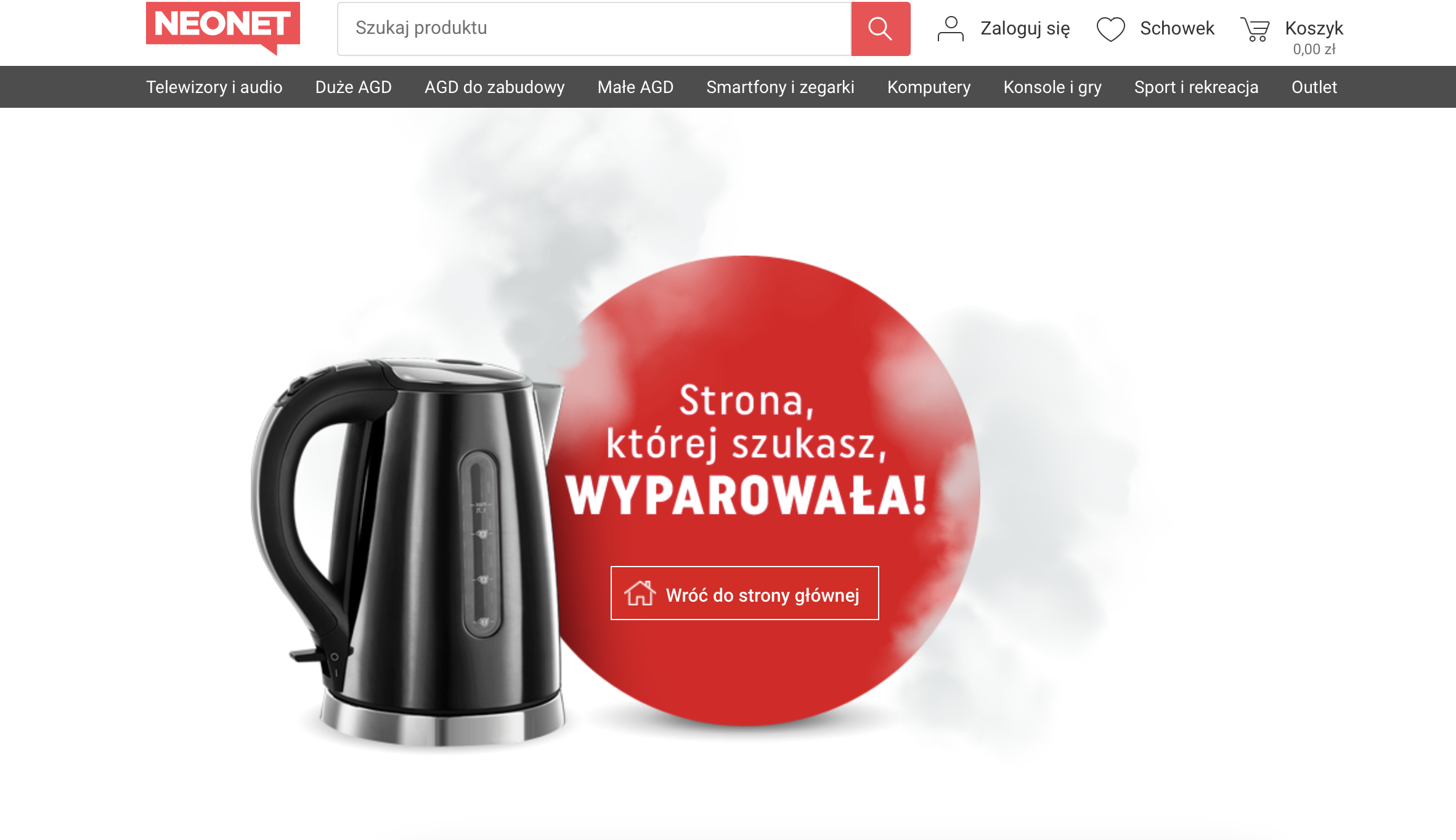User attention is a valuable currency on the web for marketers and businesses, as well as UX designers and writers. UX and content should go hand in hand, in constant dialogue with each other. Why are UX writing and content marketing among the most important strategies in the battle for the user? How to use them and what role do they play in a website-based business?
Content marketing: what is its importance in marketing?
.
Content marketing is the long-term, strategic process of planning, creating, distributing and promoting any content. Over time, it has evolved from a simple, one-way sales message to a sophisticated dialogue with the audience, focusing on their needs.Content marketing is like a guide – it takes the user by the hand: from introducing them to the brand, to understanding their needs, to purchase and one step further – it stays with them even after the business has reached its goal and led the user to conversion. Content informs, clarifies, dispels doubts, answers questions, offers solutions to problems, educates, sells and supports. .
The content creation process in content marketing can be based on 3 important questions:.
- What is the purpose of the content?
- Who is its audience?
- What is the ToV of the brand, how does it communicate?
.
Whatever the result of the analysis and answers to the above questions, content always focuses on delivering value in a way that is clear, understandable to the audience and consistent with the brand. And this is where a lot of the focus begins to have to do with UX writing..
UX writing: what is it and how does it affect user experience?
.
UX writing is based on creating content with the best user experience on a website or app in mind. The content has to be simple, clear, understandable and natural. The main goal is not only to provide information, but also to guide the user through the portal, product, service in an intuitive and brand-compliant way. .
UX writing focuses on the audience, their needs, their problems – it centers its attention around this and transforms the problem into the simplest solution. The user experience is supposed to be positive – the message should be clear, fast, and navigation should be intuitive. The UX writing process draws from the same three pillars as content marketing. However, the similarities do not end there..
UX writing vs. content marketing – basic differences and similarities
.
Both content marketing and UX writing focus on the audience-their needs, understanding of the problems and conveying the given information and value. The message has to be simple and understandable, but it doesn’t have to be boring at all. There is room for creativity, dialogue and interactivity in both issues. .

Interestingly, both strategies are measurable, although in completely different ways. Content marketing is based on KPIs, approaching it in a businesslike way. UX writing focuses on user experience as a measure of success. What is success in this case? It can be the realization of a path from start to finish – with no disruptions, form abandonments, shopping carts, a lower rejection rate, positive feedback, or meeting a goal. Both may or may not work. What about the differences?.
Content marketing can sometimes be a bit flashy – we want the user to notice us, to engage, to think, to perform some action. UX writing, on the other hand, is quiet and unobtrusive. Here we don’t want the user to think about what they are reading and how. The experience that results from UX writing is supposed to be natural and unnoticeable – like breathing. This makes every point of contact between the user and the site intuitive, fulfilling its role. The user doesn’t wonder where to click and why – UX writing leads him unobtrusively to his destination without stumbling blocks or slowdown thresholds.
Synergy of activities – CM, UXW and SEO
.
The creation of a website or application should not be created without the involvement of content – it should be included in the design stage. This way you can achieve consistency and clarity. Imagine a UX designer designing a site without knowing what the content will be. Conversely, how can you create content without knowing where it will be placed and how it will function? This is operating in the dark, leaving gaps to be filled later. .
This carries the risk of error: suddenly it turns out that the CTA button should be much larger to accommodate the text that will appeal to the page viewer, there is another section missing for content, and this one is basically unnecessary. And all because the text was created in isolation from the design.
This synergy of activities is unfortunately not yet such a common strategy. Even today, you can still come across sites filled with temporary Lorem Ipsumwhich only communicates that: “some content is supposed to be here, but we don’t know what yet.” Not very professional, is it?”.
Design by word
.
The process of integrating content and UX activities can be called design by word. The user doesn’t click on a button just because it’s a button. He needs the right incentive – a benefit that proves to him that it’s worth giving his commitment at that very moment. He won’t understand how to navigate the site or perform a certain action without microcopy. .
.
Content marketing learns from User Experience. Webwriting principles are the result of UX,how the user navigates the site, how they behave and what they expect. Every content specialist (content writer, content designer, content specialist) should plan, create and publish content, keeping in mind how it will be used and where. 33.3% of users abandon reading when an article is heavy to read and read (source: https://blog.hubspot.com/marketing/why-do-people-read-blogs)
Integrating UX writing and content marketing, however, requires a conscious and synergistic approach to a brand’s communications and marketing strategy at every level. And that can be difficult..
What about that SEO?
Good guide text (created with the viewer in mind, his way of consuming content, in accordance with the principles of webwriting) placed on a brand’s blog, for example, not only fulfills its “uiks” objectives, allowing the user to even flow through the content, engaging, clicking on banners, reaching the destination according to his needs. In doing so, it also achieves business goals with SEO at the forefront. .
Improving the user experience affects the time spent on the site, lowering the rejection rate – indicators important to Google’s algorithms. Properly designing a button with a transition to a product or service and placing it in the right place in the text along with a CTA tailored to the recipient also helpsincrease conversions. .
Thanks to this, Google gets a signal that this subpage not only has valuable content, but is also created in such a way that the user finds what he or she is looking for by smoothly following the designated path.

What to keep in mind when creating UX-based content?
.
The goal of UX is to provide users with a smooth, intuitive and efficient portal experience. Always start with a diagnosis of the potential customer’s needs and expectations – tailor the text, its content and additional materials to them. What’s more? Here are 6 basic rules on how to create effective content:.
- The simpler, the better – there is a trend of minimalism in UX and it also applies to copy. A simpler message has more power than sophisticated words.
- Stand for benefit language – the most important thing about text, regardless of its format and purpose, is its value to the user. Use language that will emphasize specific value, benefits – but not artificially pumped up.
- Apply the inverted pyramid principle – always start with the most relevant information for the reader. Trying to keepthe clue the text to the very end to keep the user longer can be counterproductive.
- Remember text segmentation – make it easy for the user to consume your site – divide text into smaller paragraphs, insert thematic images, videos, links or banners that complement the text. Users on the Internet most often use the so-called skim readingthat is, they scan the text with their eyes. Moreover, such a quick glance at the text and content of the page can lead to misunderstanding, misinterpretation, so try to minimize this risk as much as possible.
- Enter a dialogue -the days of one-sided messages are over. Users decide what is valuable to them, so don’t lead a monologue. Create room for interactivity with links, buttons, CTAs, or comment sections.
- Listen to SEO -there is no SEO without content, no content without SEO, and no site without SEO and content. Pay attention to important indicators, among others, the loading speed of the page – many a user will flee in panic if they have to wait longer for the content to load.
.

UX writing a content – summary
.
Clear message, smooth navigation, response to user needs are the result of thoughtful synergy of CM, SEO and UX activities. Good content not only informs, but above all gives value, engages, inspires and loyalises. .
Content is often still thought of as a separate entity. Meanwhile, it should always be an integral part of the whole – a website, project or strategy. From the idea, sketch, all the way to implementation. UX writing plays an important role in creating content, user experience, indirectly influencing SEO and key business drivers. .
In a digital business, a user’s attention is very valuable – don’t let the competition take over.
 Agnieszka Surówka
Agnieszka Surówka